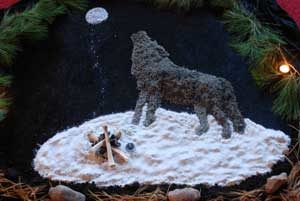The Wheel of the Year as a Spiritual Psychology for Women
Winter Solstice
 Winter Solstice, probably the best known and certainly the most appropriated of all the old pagan Holy Days, is celebrated as a time of rest and quiet. Imagine aligning with the ancient people’s rhythms as they rested post-harvest, storytelling by the fire, moving into a kind of semi-hibernation for deep winter – a shamanic sleep-dream-journey state. What a perfect time to dream, seek vision, trance here in the quiet safe dark – especially on the longest night of our time in the winter cave or temple.
Winter Solstice, probably the best known and certainly the most appropriated of all the old pagan Holy Days, is celebrated as a time of rest and quiet. Imagine aligning with the ancient people’s rhythms as they rested post-harvest, storytelling by the fire, moving into a kind of semi-hibernation for deep winter – a shamanic sleep-dream-journey state. What a perfect time to dream, seek vision, trance here in the quiet safe dark – especially on the longest night of our time in the winter cave or temple.
We turn off artificial lights. We sit in darkness, light candles, bring in evergreen trees and branches to remind us that there is life, despite all that looks dean and barren. We give each other gifts, items we might need in the winter months ahead. “Here take this tea, this candle, to remind you just when you need it most, that sun and light and warmth will return.”
Holidays, and the traditional gatherings with patriarchal biological families, can sometimes bring up emotions and trigger old unresolved issues in family settings. We are vulnerable to the depressive effects in winter of coldness, malaise, inactivity. Short days with little sunlight throw off our circadian rhythms and lull us to longer sleep. Midwinter Solstice festivals, the gatherings of family and tribe, are cultural winter therapies that evolved to give us bright illumination, feasting, communion with close ones, and physical exertion by dancing and singing. Such traditions can stir the wit, stave off malaise, reset the internal clock and rekindle the human spirit.